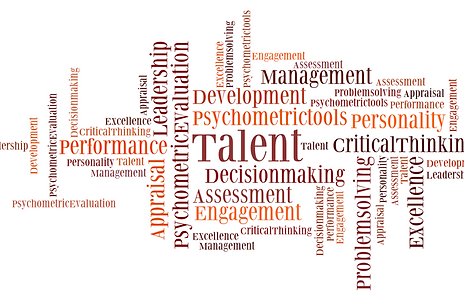Delivering Excellence!
Assessment & Development

The labor market has undergone substantial changes due to technological advancement and globalization. Technological advancement has created new opportunities and redefined existing roles. A competency test is used to assess an individual's strengths and weaknesses in areas such as problem-solving, logical reasoning, verbal comprehension, and decision-making ability. Tests can also be used to predict future job performance, specific abilities, and areas in which an individual is likely to excel.
One of the benefits of assessments is that they put candidates through a specific evaluation that measures the competencies of specific job roles. They can provide dependable assessment metrics that correspond to job roles. To determine a candidate's suitability for a business analyst role, for example, one must thoroughly assess data processing and decision-making skills. In contrast, abstract reasoning and verbal ability aid in determining a candidate's suitability for a marketing position.
Aside from that, aptitude tests provide an unbiased score on intelligence or mental ability. And such a score can improve the effectiveness of the assessment, allowing for better L&D initiatives. A person with high aptitude, for example, can fit into multiple roles if given the necessary training. A suitable aptitude test can assist in identifying such high-aptitude individuals.
It is difficult to shortlist the best candidates for a role or an educational program unless there is data to support their ability to learn and apply that learning. Aptitude tests can serve as a foundation for that data because they assess several aspects of the test-cognitive taker's intelligence. The section that follows delves deeper into the subject.


